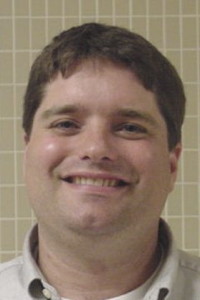"A debate of what we know, think we know, and don't know about the use of simulation and randomization-based methods as alternatives to the consensus curriculum of the Stat 101 course"
with Christopher Malone, Winona State University; and Nathan Tintle, Dordt College
Recording
(Tip: click the fullscreen control)
Having trouble viewing? Try: Download as .mp4 (h.264/AAC MPEG-4)
Abstract
The GAISE guidelines (GAISE 2005) have greatly improved the pedagogy of Stat 101, the algebra-based introductory statistics course. However there has been relatively little re-thinking over time about the core content of the curriculum (Cobb 2007). The presenters have recently implemented alternative course sequences and proposed changes to the content of the Stat 101 course (Malone et al. 2010, Tintle et al. 2011). Malone and colleagues propose a significantly re-ordered course and currently use simulation-based methods to introduce the concepts necessary for the learning of traditional Stat 101 content. On the other hand, Tintle and colleagues propose a significantly re-ordered course and use randomization-based methods, in addition to simulation-based methods, to introduce and motivate Stat 101 content. The presenters will briefly discuss their motivations for considering alternative curriculums and will identify points of agreement. The focus of this presentation, however, will be to debate the points at which their two approaches differ, with an aim towards identifying open research questions of interest to the statistics education community. For example, should we discuss randomization methods? Should we teach the bootstrap? How should students be exposed to simulating a null model? What's the best way to introduce confidence intervals? And much more!
Methods to Engage the Audience:
This presentation will be a debate on a topic that has received a significant amount of attention recently from the statistics education community. Below is a tentative list of debate questions.
- Should we be doing randomization-based methods in courses where expectations are we cover XYZ?
- Should we be teaching the bootstrap?
- What's the best way to introduce confidence intervals?
- What is the appropriate background knowledge before introducing students to null/alt hypothesis, p-value concepts, etc.?
- How should we be simulating the null model?
Goals of Presentation:
- The presenters will share with audience the most recent advances in the use of simulation and randomization-based methods in the teaching of the Stat 101 course.
- The presenters will discuss their experiences, both positive and negative, with the use of simulation and randomization-based methods in the teaching of the Stat 101 course.
- Some of the open research questions regarding this topic will be discussed. Audience participation is expected throughout this discussion.
Presenters
|
|
|


